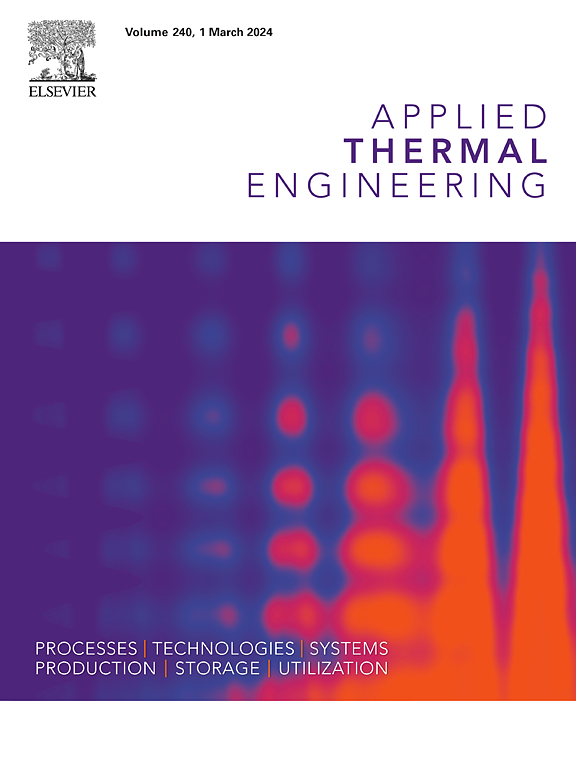Experimental and machine learning-based investigation of additively manufactured PCM encapsulation geometries for enhanced thermal and electrical performance in battery thermal management system
IF 6.9
2区 工程技术
Q2 ENERGY & FUELS
引用次数: 0
Abstract
In this study, the thermal and electrical performances of phase change material (PCM) based battery thermal management systems (BTMS) with different macro-encapsulation geometries (hexagonal – Hx, square – Sq, circle – Cr) and produced by additive manufacturing method were experimentally evaluated. The developed BTMS structures provided a safe and stable structure by preventing PCM leakage and direct contact with the battery. Hexagonal (Hx) geometry showed superior thermal performance compared to other geometries by providing the lowest battery temperatures at all C rates. Hx BTMS limited the increase in internal resistance by increasing the heat transfer from the battery to the PCM, thus maintaining voltage stability and increasing the energy density by up to 6.90 %. At high discharge rates, the latent heat storage feature of PCM was activated only in the Hx structure, and this made active heat management possible. It was shown in the analyses performed with an artificial neural network (ANN) that the experimental data could be predicted with high accuracy, and it was determined by SHAP analysis that Hx geometry had the highest positive effect on the voltage. These results demonstrate the critical importance of macro-encapsulation geometry in BTMS design and demonstrate that Hx geometry offers a superior solution in terms of thermal safety, voltage stability, and long cycle life.
基于实验和机器学习的增材制造PCM封装几何形状的研究,以提高电池热管理系统的热电性能
本研究对采用增材制造方法制备的具有不同宏观封装几何形状(六边形- Hx、正方形- Sq、圆形- Cr)的相变材料电池热管理系统(BTMS)的热学和电学性能进行了实验评估。所开发的BTMS结构通过防止PCM泄漏和与电池直接接触,提供了安全稳定的结构。与其他几何形状相比,六边形(Hx)几何形状在所有C速率下提供最低的电池温度,从而显示出优越的热性能。Hx BTMS通过增加从电池到PCM的热量传递来限制内阻的增加,从而保持电压稳定性并将能量密度提高高达6.90%。在高排放速率下,PCM的潜热储存特性仅在Hx结构中被激活,这使得主动热管理成为可能。用人工神经网络(ANN)进行的分析表明,实验数据可以有很高的精度预测,并且通过SHAP分析确定Hx几何形状对电压的正向影响最大。这些结果证明了宏观封装几何结构在BTMS设计中的重要性,并证明了Hx几何结构在热安全性、电压稳定性和长循环寿命方面提供了卓越的解决方案。
本文章由计算机程序翻译,如有差异,请以英文原文为准。
求助全文
约1分钟内获得全文
求助全文
来源期刊

Applied Thermal Engineering
工程技术-工程:机械
CiteScore
11.30
自引率
15.60%
发文量
1474
审稿时长
57 days
期刊介绍:
Applied Thermal Engineering disseminates novel research related to the design, development and demonstration of components, devices, equipment, technologies and systems involving thermal processes for the production, storage, utilization and conservation of energy, with a focus on engineering application.
The journal publishes high-quality and high-impact Original Research Articles, Review Articles, Short Communications and Letters to the Editor on cutting-edge innovations in research, and recent advances or issues of interest to the thermal engineering community.
 求助内容:
求助内容: 应助结果提醒方式:
应助结果提醒方式:


